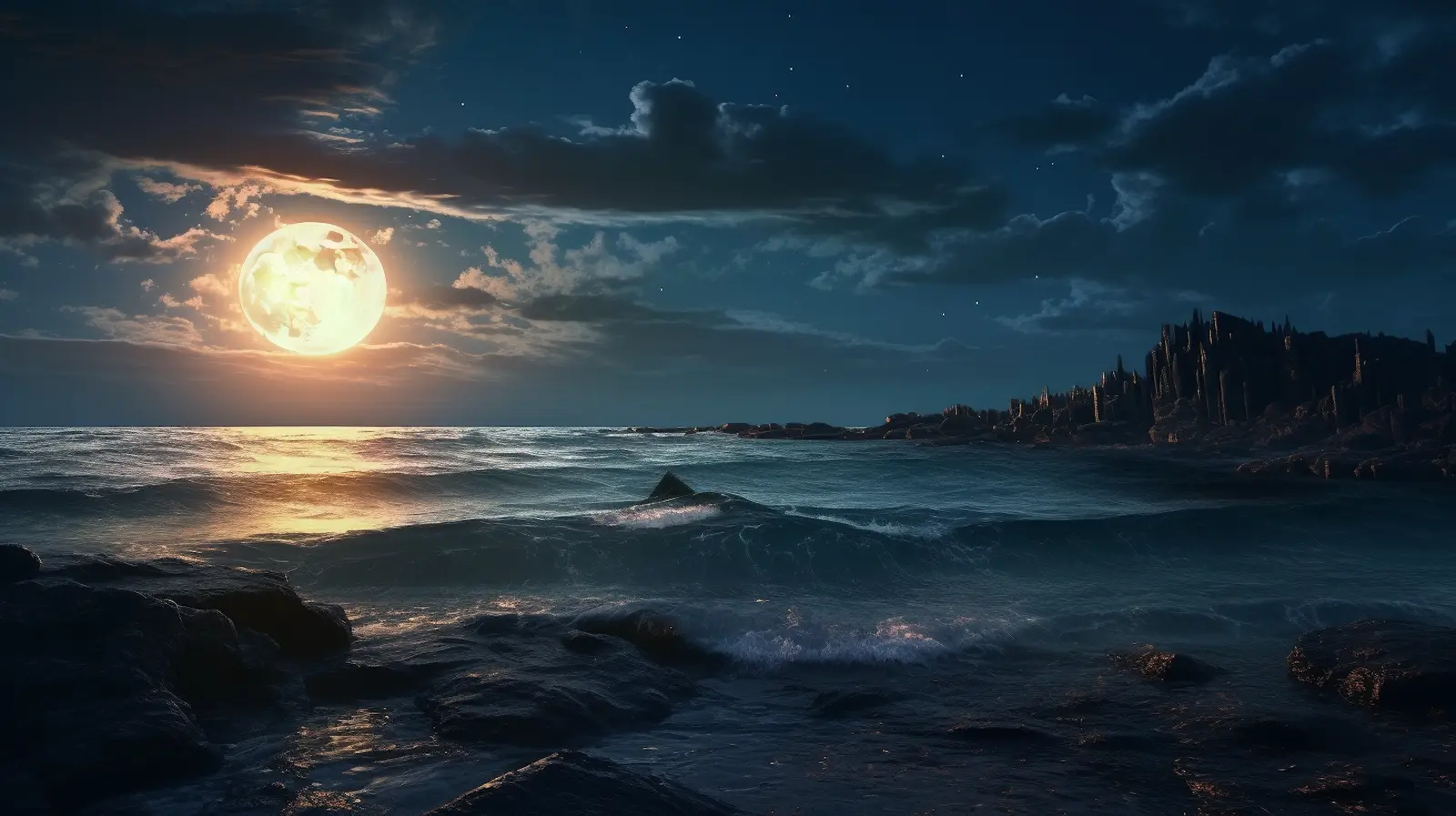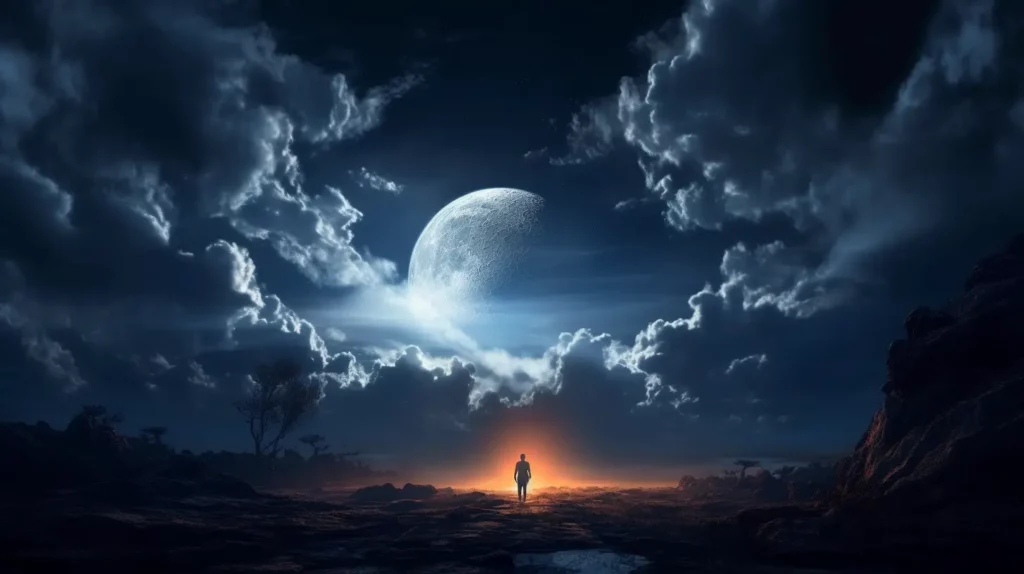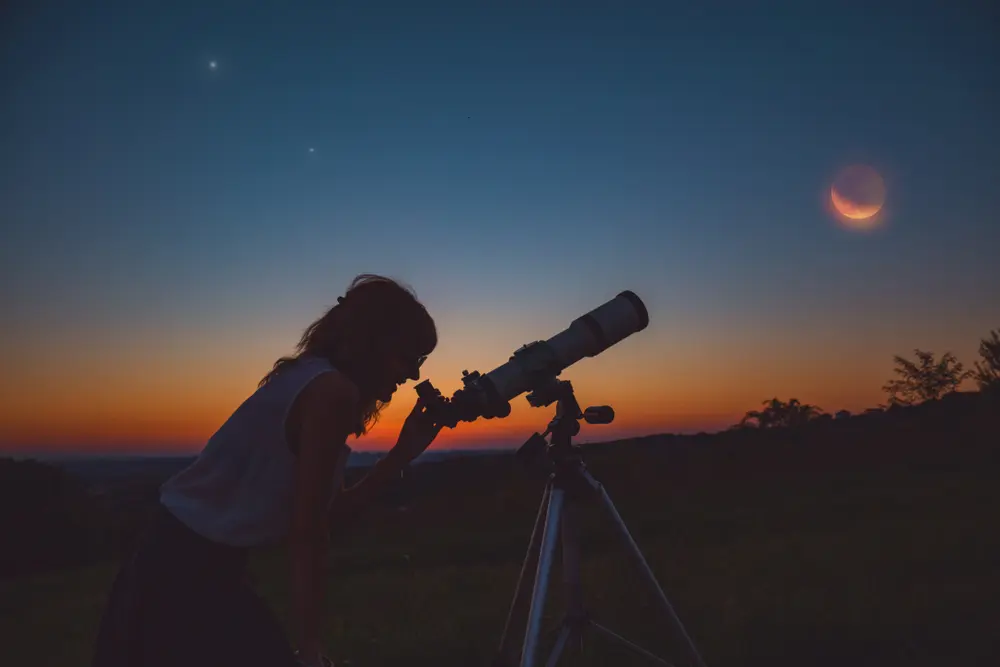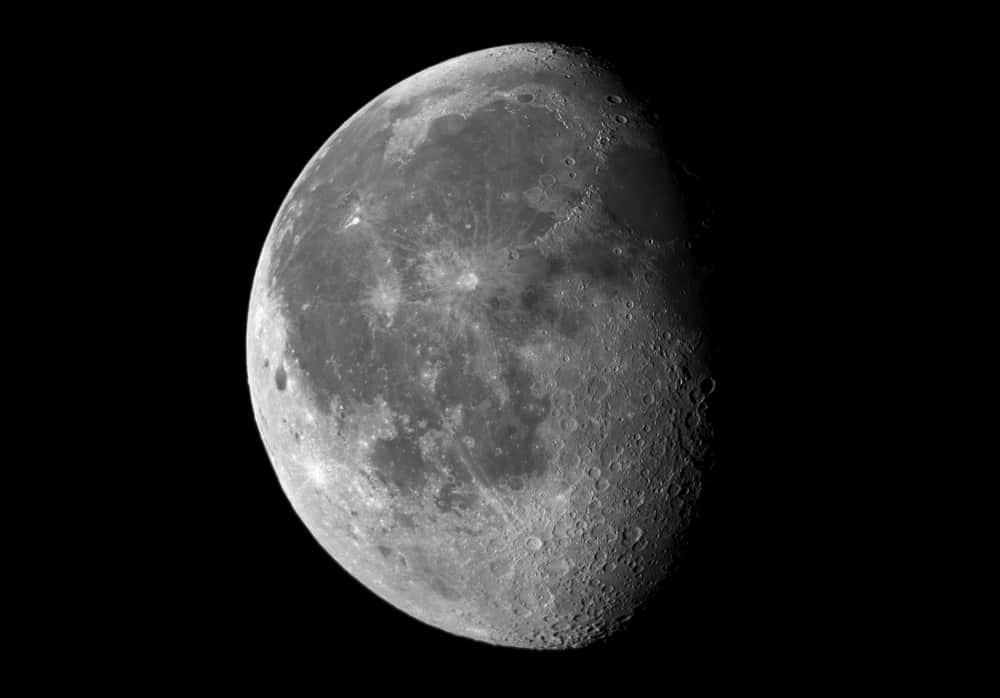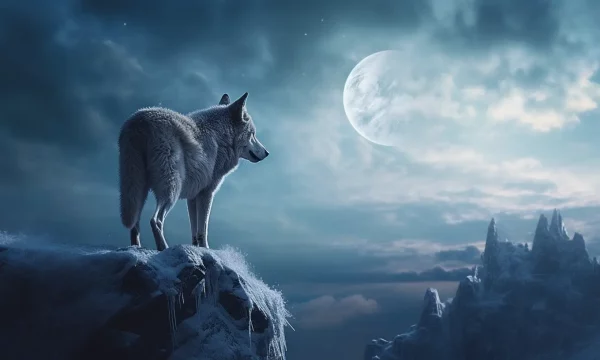
When is The Full Moon in January? The Wolf Full Moon 2024
Last Updated: November 9, 2023
The upcoming full Moon in January will grace our night sky on Thursday 25, 2024 at 12:54 PM EST or 5:54 PM UTC. During this particular phase of its lunar cycle, the Moon will have aged 13.43 days, offering a near perfect illumination of 99.21%.
With a tilt angle of 164.206°, our natural satellite will be located approximately 398,751.89 km away from Earth. This equates to about 247,772.93 miles, or roughly 0.00266 Astronomical Units (AU). This means the Moon will only be about 11.2% away from its average perigee distance (closest distance from Earth).
In terms of light travel time, this distance corresponds to approximately 0.0221 light minutes. In the realm of astrology, the Moon will align with the sign of Cancer on this day.
Countdown to the January Full Moon
January Full Moon Stargazing Information
The Moon’s magnitude, a measure of its brightness, will be -12.58. In astronomical terms, a lower value signifies a brighter object, which means the Moon will be exceptionally bright during this event.
The terms Ra/Dec refer to the Moon’s position in the sky, known as Right Ascension (Ra) and Declination (Dec). These coordinates will be 08h 01m28.0s and +24°58’42.7″, respectively, corresponding to the celestial longitude and latitude.
Similarly, the terms Az/Alt denote the Moon’s azimuth and altitude, which represent the Moon’s direction and height from the horizon, respectively. These will be 288°31’17.4″ for the azimuth and +16°44’17.1″ for the altitude.
The Moon will have an apparent diameter of 29 arcminutes and 47 arcseconds, so even though it will be quite enjoyable to the naked eye, observing it with a basic set of binoculars or a small telescope, will allow for a detailed exploration of its surface features if using a lunar filter. It might be too bright otherwise.
Additional information:
- Moonlight intensity: High
- Moonlight shadows: Strong
- Culmination time: location dependent
- Moonrise time: location dependant
- Moonset time: location dependent
- Supermoon? No
- Micromoon? No
- Blue moon? No
- Lunar Eclipse: No
- Conjunctions? None
- Close approach: None
Nearby night sky objects:
On that night, the full moon will be located right in between the Cancer and Gemini constellations. West of the Moon, you’ll be able to spot the beehive cluster, right inside the cancer constellation.
In the east direction from the Moon, you will be able to see you the two main stars in the Gemini constellation: Pollux (mag 1.29) and Castor (mag 1.58). There will be no planets nearby in this part of the sky.
Why is the Full Moon in January called the Wolf Moon?
Named for the increased wolf activity during midwinter with sustained frigid temperatures, deep snow in the north, and limited food availability, the first full moon of the year is typically called the Wolf Moon. Even today, you may see increased predator activity during this month, but the Native Americans and other peoples of years past (such as Celtic and Old English populations) definitely felt it, having to be cautious of animals who were also hungry in the depths of winter.
This moon is also sometimes known as Old Moon, Severe Moon, Center Moon, the Moon After Yule (Anglo-Saxon), Stay Home Moon (Celtic), Quiet Moon (Celtic), or the Ice Moon. In some tribes, this was the Snow Moon, but most used this moniker for the second full moon of the year. In China, it is known as the Holiday Moon.
Related reading: The Meaning Behind the 12 Full Moon Names
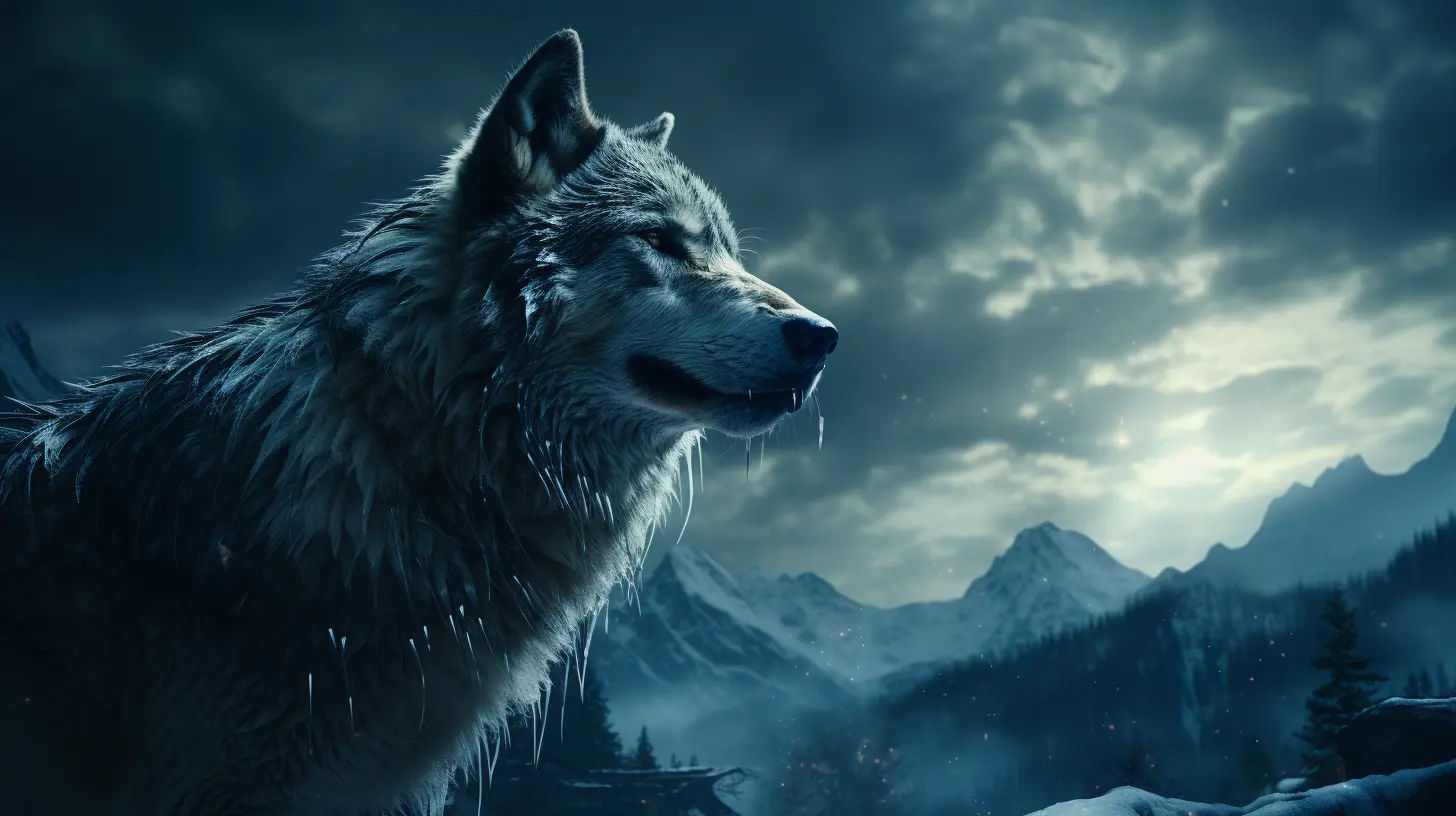
Observing this Wolf Full Moon with astronomical equipment
The Moon offers a variety of interesting features that you can observe, even with modest equipment. The Moon is without a doubt the easiest celestial object to observe with a backyard telescope or a pair of astronomical binoculars.
The Moon can shine a rather bright light when it is full so the use of a special lunar filter can help improve your view of the Moon. This is an additional component that reduces the amount of light coming into the telescope, making it easier to see the details without being blinded.
It essentially works much like ‘sunglasses’ for your telescope. It reduces glare and improves contrast, allowing you to see more detail. The filter threads into the bottom of an eyepiece, so it’s easy to add or remove as needed.
A smaller aperture telescope (60mm to 80mm) can provide good views of the Moon. You’ll be able to see a decent amount of detail, including larger craters and lunar maria.
Medium aperture telescopes (around 100mm to 150mm) will give you a much better view, revealing many more features and allowing you to see smaller craters and other details.
With large aperture telescopes (200mm and above), that’s where the magic happens! You’ll see more detailed views of the edges of lunar maria, where they meet the highlands.You’ll be able to discern more subtle color differences in the lunar surface as well as mountain ranges casting subtle shadows on the lunar surface. You might be able to see hints of the lunar domes, which are gentle, rounded mounds thought to be the remnants of ancient lunar volcanoes.
Be sure to choose the correct eyepiece as it will greatly influence your field of view at the eyepiece. Try my field of view calculator to determine the best eyepiece for your lunar observations.
Planning your lunar observation with Stellarium
Stellarium is a free open-source planetarium for your computer that shows a realistic sky in 3D, just like what you see with the naked eye, binoculars, or a telescope. It’s one of my favourite stargazing applications. I use it on a weekly basis and it’s super easy to use.
Here is a step-by-step guide to using it for timing your observation of the upcoming Wolf full Moon:
- Set Your Location: Open https://stellarium-web.org/ into your internet browser. In order to find accurate rise and set times for the Moon, you need to set your geographic location. Click on the “Location Window” button on the left toolbar. In the window that pops up, search for your city in the “Search” field, then click on your city’s name in the list. This sets your location.
- Set the right time: Stellarium can show you the sky at any time, past, present, or future. To get the full Moon time, which in January will be the 25th, you need to click on the “Date/time window” button on the bottom right of the screen. You can also manually adjust the time by hours and minutes and see the sky move before your eyes.
- Locate the Moon: Now, you need to find the Moon in the sky. You can do this by using the search function. Click on the “Search Window” button on the centre top of screen. Type “Moon” into the search field and press enter. The view should now center on the Moon.
- Check Moonrise and Moonset Times: Once the Moon is centered, an information box should pop up on the upper left corner of the screen. This box will provide various details, including the moonrise and moonset times for the chosen day.
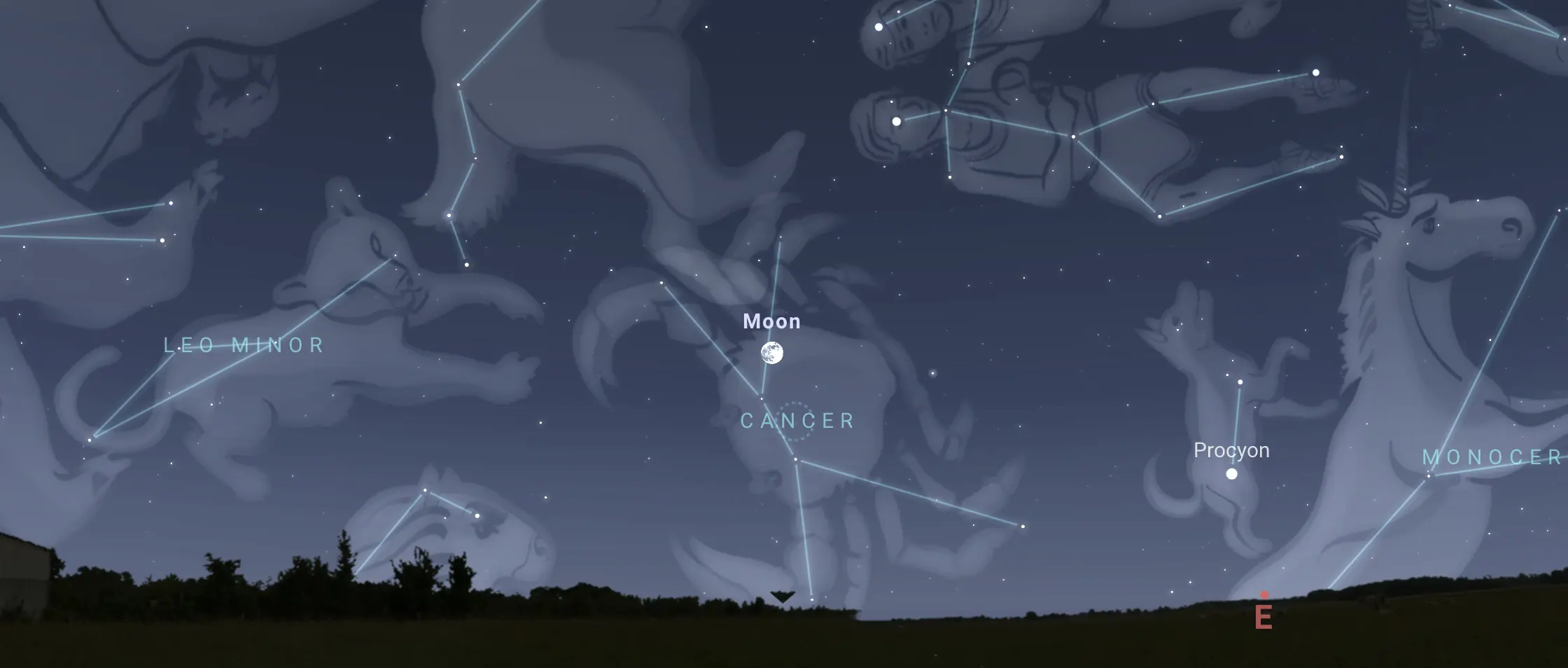
Dates & Times for the other Moon phases in January
Besides the full moon, there are seven other major phases in the lunar cycle: the new moon, waxing crescent, first quarter, waxing gibbous, waning gibbous, last quarter, and waning crescent. Each of these phases presents a unique view of the moon and contributes to the lunar cycle that we observe from Earth.
- Last Quarter on Wednesday, 03 January 2024 at 19:31 PST (03:31 UTC)
- New Moon on Thursday, 11 January 2024 at 03:58 PST (11:58 UTC)
- First Quarter on Wednesday, 17 January 2024 at 19:53 PST (03:53 UTC)
The next Wolf full Moon will take place on Monday, January 13, 2025 at 14:26 PST (22:26 UTC).
Lunar Luminosity: the full Moon’s light influence on the world
The full Moon has a few notable influences on Earth:
- Tides: The gravitational pull of the Moon causes the Earth’s oceans to bulge out in the direction of the Moon.
- Light: A full Moon provides significant natural light at night, which can affect nocturnal animals’ behavior and plant life.
- Floral behaviours: Some species of plants, such as the Ephedra foeminea (also known as werewolf plant) releases its pollen in sync with the full Moon.
- Human behavior: There have been many theories on how the full Moon may affect humans differently, whether it be our sleep pattern, our cardiovascular system, menstruation cycles, and our mood and mental health. However, despite much scientific research that has been done in the last ten years, scientists have not been able to prove the effects of the full Moon on human psychology or behavior.
Full Moon celebrations around the world
The full Moon has been a significant cultural symbol and theme throughout human history, appearing in myths, legends, superstitions, and rituals across the globe. In Thailand, the full Moon is celebrated every month during the infamous full Moon party.
In Sri Lanka, each full Moon day is a public holiday, known as Poya. Each Poya has its own name and is associated with Buddhist events. These days, people often go to the temple for religious observances.
In Wiccan traditions, an Esbat is a ritual observance of the full Moon. It’s a time for meditation, divination, and spellwork that align with the peak of the Moon’s energy.
In China, the Mid-Autumn Festival, also known as the Moon Festival, is celebrated during the full Moon of the 8th lunar month (usually September). Families gather to admire the Moon, eat mooncakes, and in some regions, light lanterns.
If you know of any more celebrations that should be added to this list, let me know in the comment.
How dull would our night sky be without our natural satellite? Why not use this full moon as an opportunity to plan a lovely stargazing date with someone special in your life?
Future Full Moons This Year
- The February ‘Snow’ Full Moon
- The March ‘Worm” Full Moon
- The April ‘Pink” Full Moon
- The May ‘Flower” Full Moon
- The June ‘Strawberry’ Full Moon
- The July ‘Buck’ Full Moon
- The August ‘Sturgeon’ Full Moon
- The September ‘Corn’ Full Moon
- The October ‘Hunter’ Full Moon
- The November ‘Beaver’ Full Moon
- The December ‘Cold’ Full Moon

Wow! There's more to read 🚀
This moon-related story is part of our collection of stargazing articles. If this piece sparked your interest, you’re sure to enjoy the fascinating insights offered in our subsequent articles.
